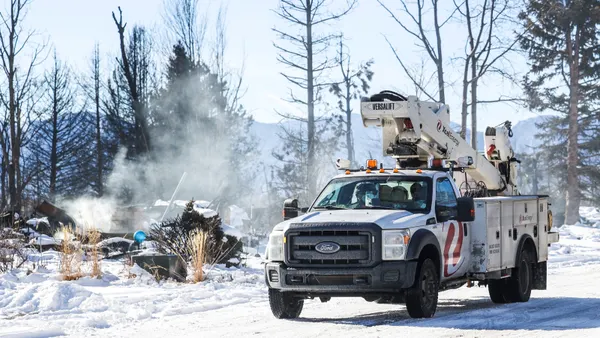Editor's Note: The following is a guest post from Bryce Smith, founder and CEO at LevelTen Energy.
As cities and universities roll out plans to transition their operations to green power and renewable energy, 2035 is emerging as a common finish line for carbon neutrality. The problem? We don’t have that kind of time.
The simple truth is that cities and universities have both environmental and economic imperatives for implementing their renewables plans on a much shorter timeline. Thanks to price data transparency and the aggregation of energy projects, emerging marketplaces for renewable energy are making the adoption of renewables plans faster and easier than ever before.
The year 2035 is a misguided standard
Cities and universities play an important role in reducing carbon emissions through the implementation of sustainable energy practices. But many are baking unreasonable timelines into their plans for carbon neutrality.
For example, Cornell University and Swarthmore University have adopted carbon neutrality plans slated for completion in 2035. The City of Vancouver extended its timeline even further, establishing 2050 as the date by which it will procure 100% of its energy from renewable sources.
Unfortunately, these aren’t isolated examples. Decision makers in many cities and universities drag out the adoption of their renewables plans because they believe the shift to renewables-first energy strategies will be plagued by cost and complexity. Combined with the cumbersome machinations of government and academic bureaucracy, this perception impedes progress and unnecessarily delays the implementation of sustainability practices.
Institutions and municipalities frequently tout the aggressiveness of their efforts in the media. While a 2035 (or later) renewables goal may be a good PR strategy, it’s not an effective plan. By setting a distant goal, cities and universities can demonstrate investments in sustainable operations while avoiding tangible steps toward timely renewables adoption.
Although a delayed approach may have worked in the past, it’s no longer good enough — especially given the host of options now available to cities, universities and smaller organizations.
More timely renewables plans are possible
The days when cities, universities and other entities could hide behind distant carbon neutrality and renewables goals are over. Companies like Apple are setting a precedent for 100% renewable operations now, not 15 years out and certainly not in 2050. As leaders in sustainability, these companies are recalibrating expectations and galvanizing smaller enterprises to establish more timely renewables goals — an imperative that will soon extend to municipalities and post-secondary institutions.
To be fair, the transition to carbon neutrality can seem daunting. But there are several things cities and universities can do to fast track a 100% renewables energy strategy:
- Make the investment now. Big, sweeping goals delay the adoption of renewables plans and serve as a deterrent to progress. Instead of trying to do everything at once, start small and invest incrementally. By breaking down your renewables plan into bite-size chunks, you can avoid delays and achieve carbon neutrality in a more timely manner.
- Highlight the economic impact. Reframe the conversation in fiscal terms to counter bureaucratic resistance to timely renewables adoption. When you consider the long-term cost of renewables compared to fossil fuels, it’s financially irresponsible to delay pursuing a renewables strategy as quickly as possible.
- Leverage the emerging renewables purchasing marketplace. Leveraging price data transparency and aggregation, the recent emergence of renewables procurement marketplaces enables cities and universities to access energy renewable energy in smaller quantities and across multiple projects. With low barriers to entry, the marketplace reduces the timeline for the implementation of renewables plans.









